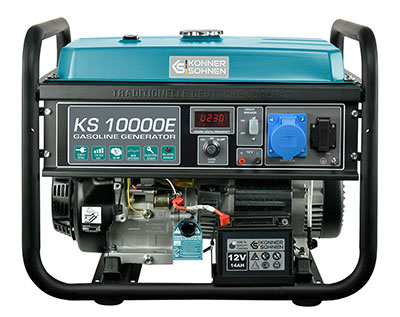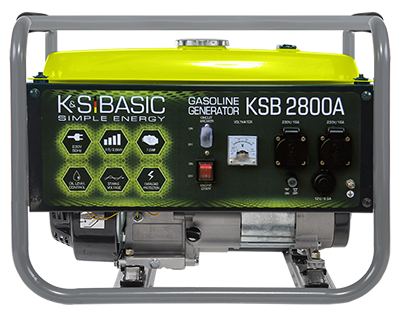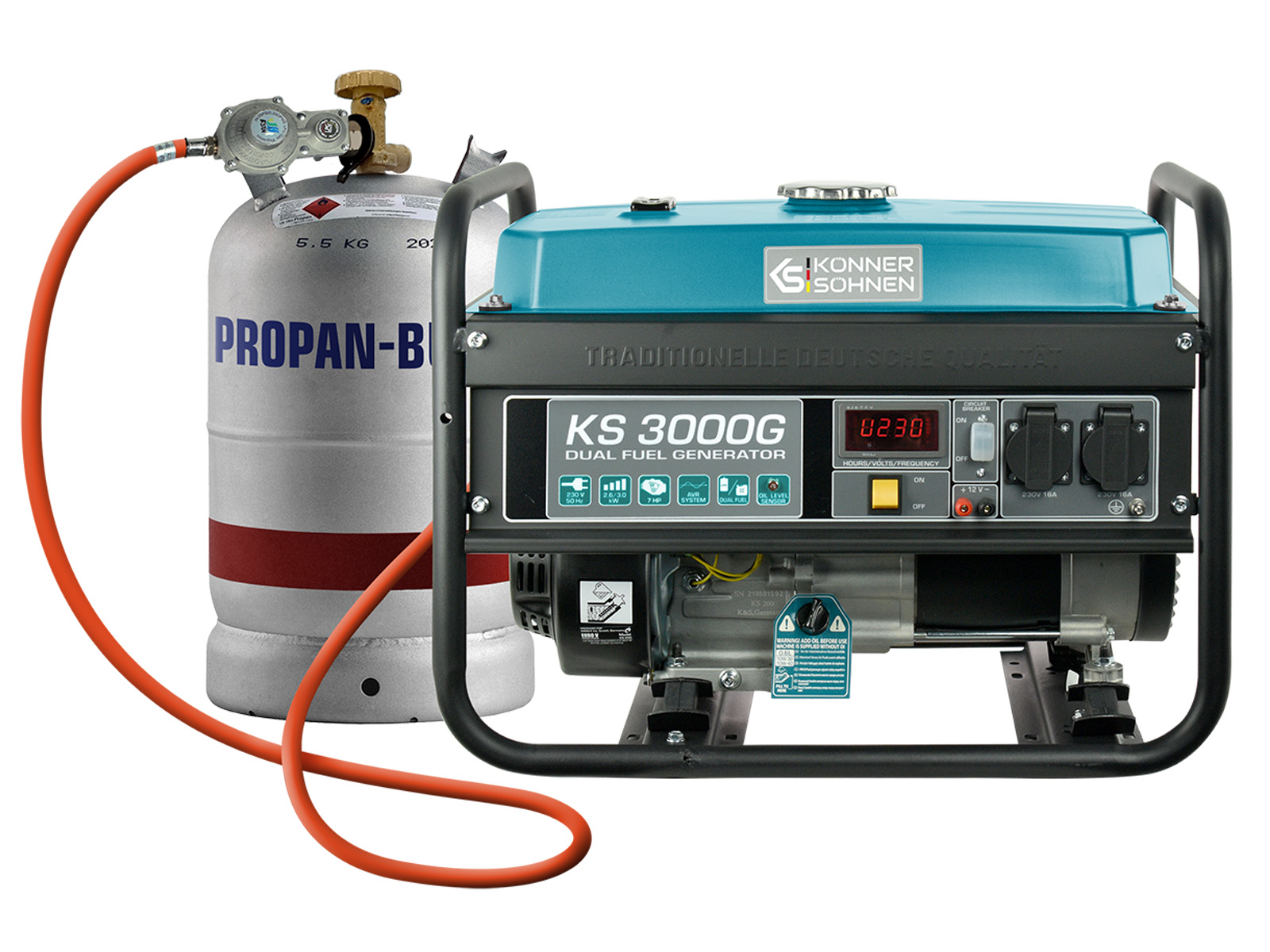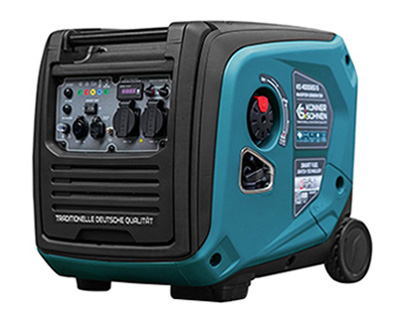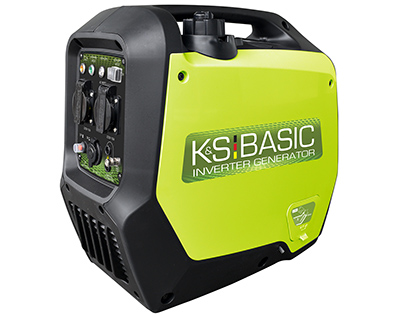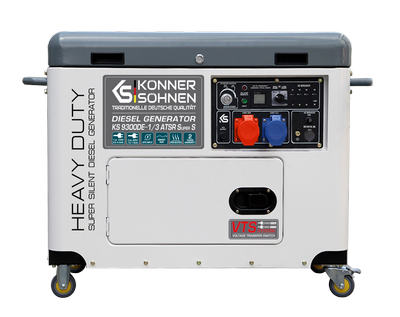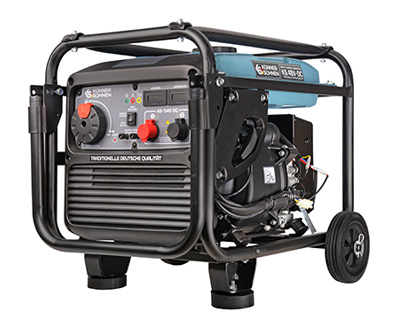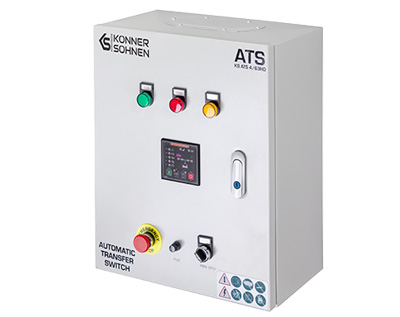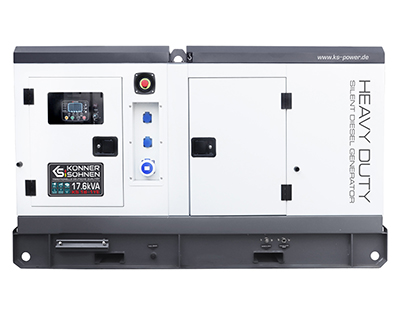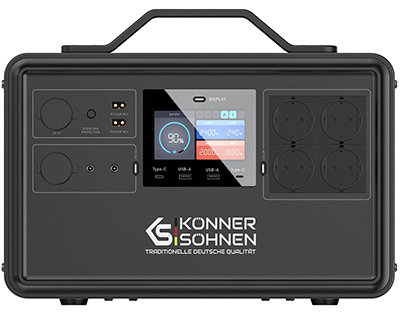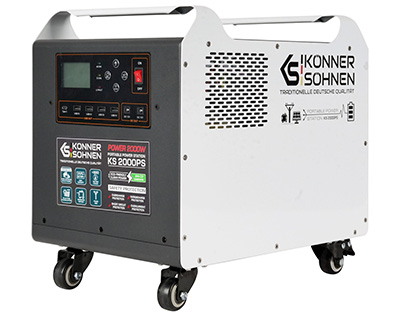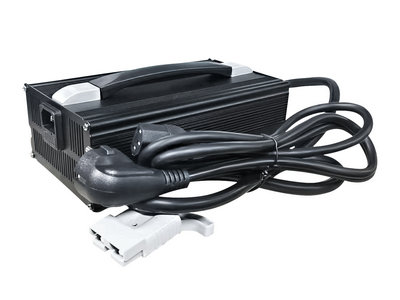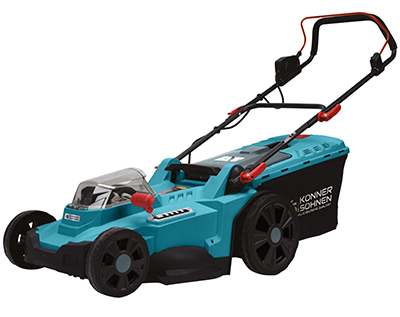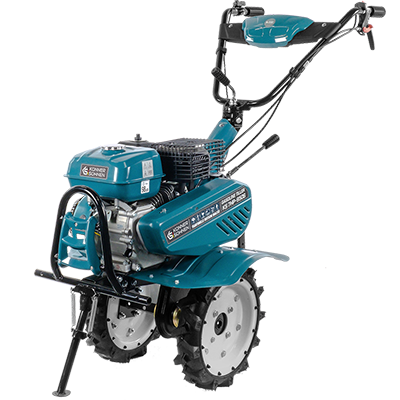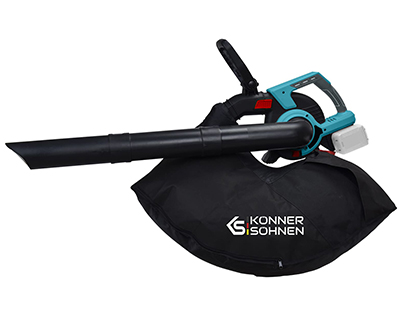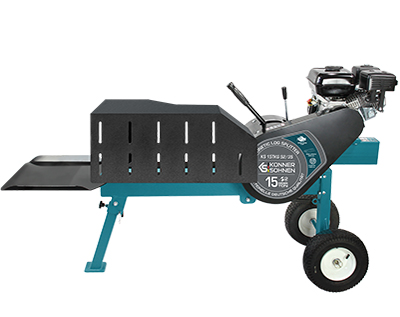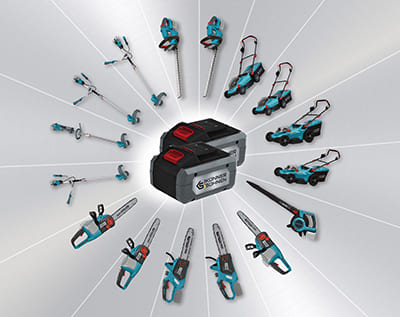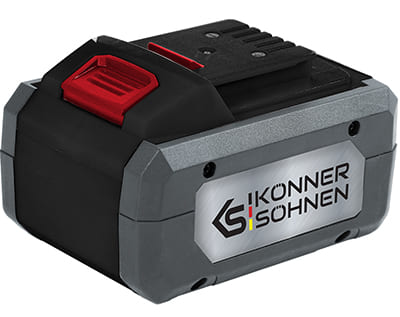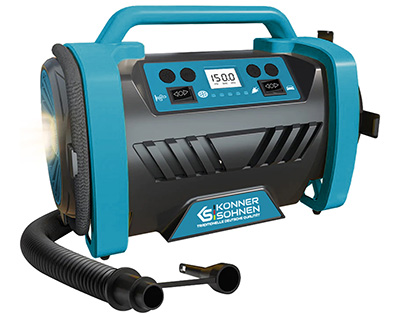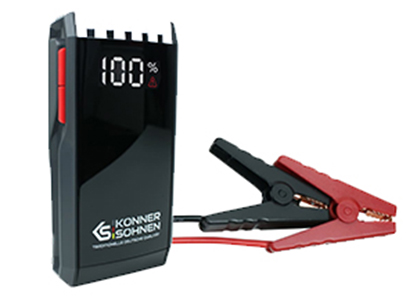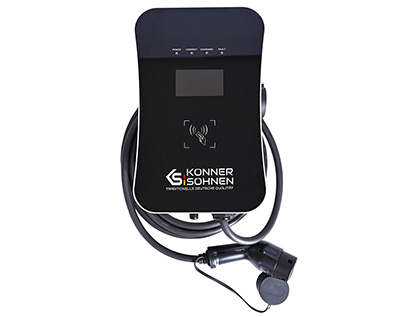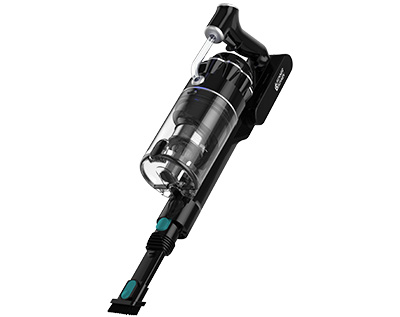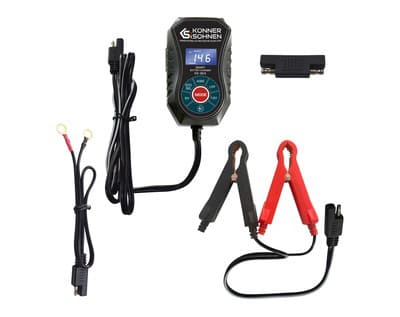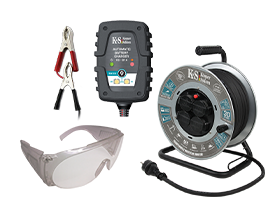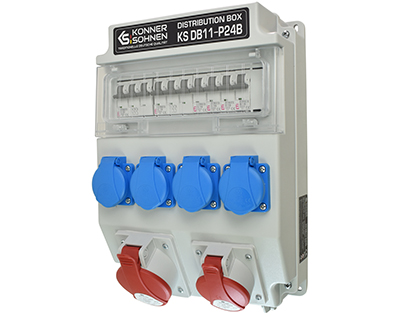The article is protected by copyright. Publishing the entire article or its parts without a clear reference to the source (a link to the Könner & Söhnen website) is not permitted.
These instructions describes the use of the KS 48V-DC direct current generator as an emergency power source for systems with battery storage based on very common 48V batteries from Pylontech with 15 LiFePo4 cells in series, but is also applicable to other 48V battery storage systems such as 13 LiIon cells to be used in series etc.
DC GENERATORS as an energy source for battery storage have many advantages compared to the combination of an alternator and charger. A more detailed description can be found in our information material “Emergency power solutions with the KS 48V-DC direct current generator”.
KS 48V-DC is connected directly to the battery or 48V busbar and performs the same function as other direct current sources such as a solar field or wind turbine with a charge controller.
Charging the battery via the solar charge controller is complicated, depending on the power consumption of the inverter:
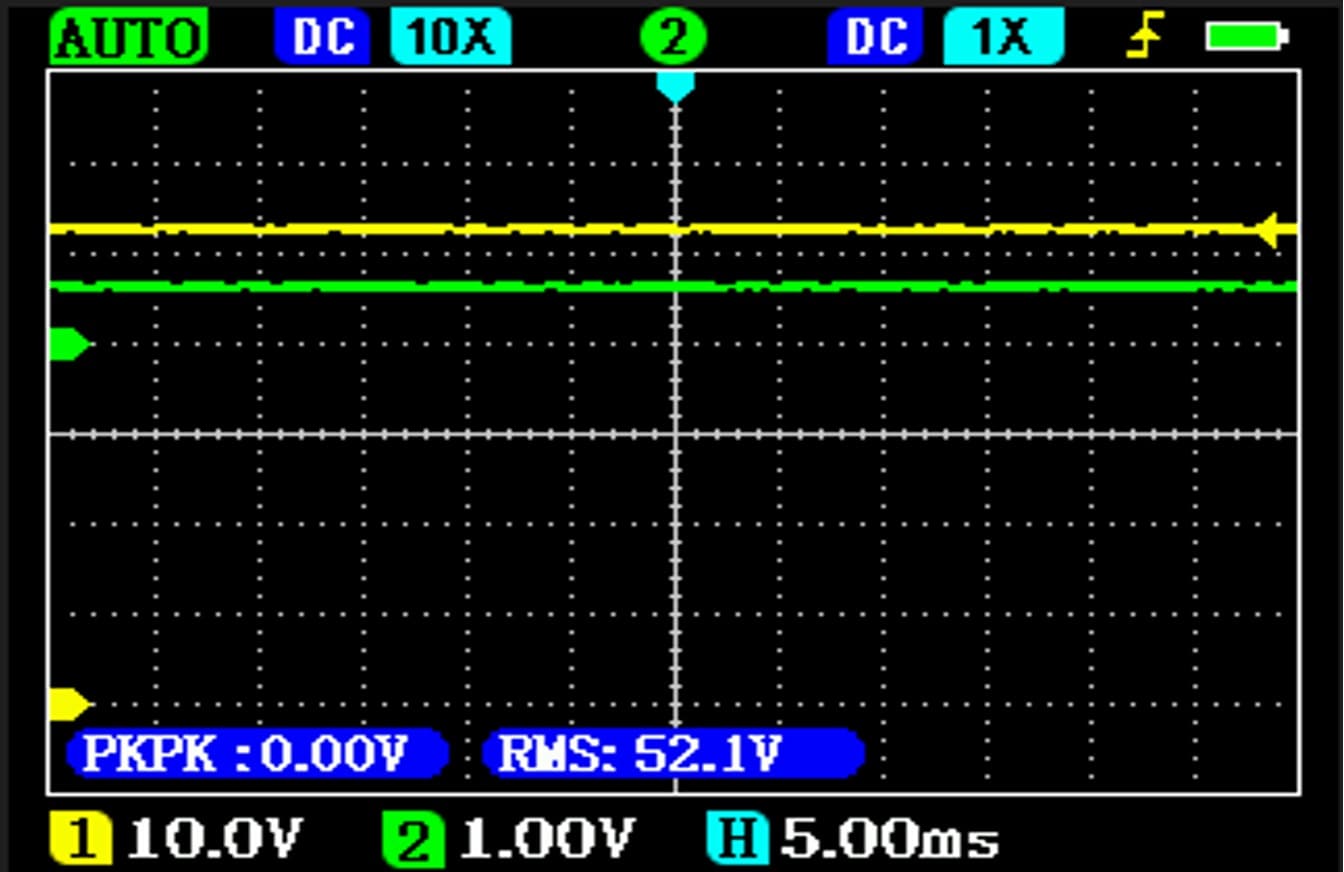
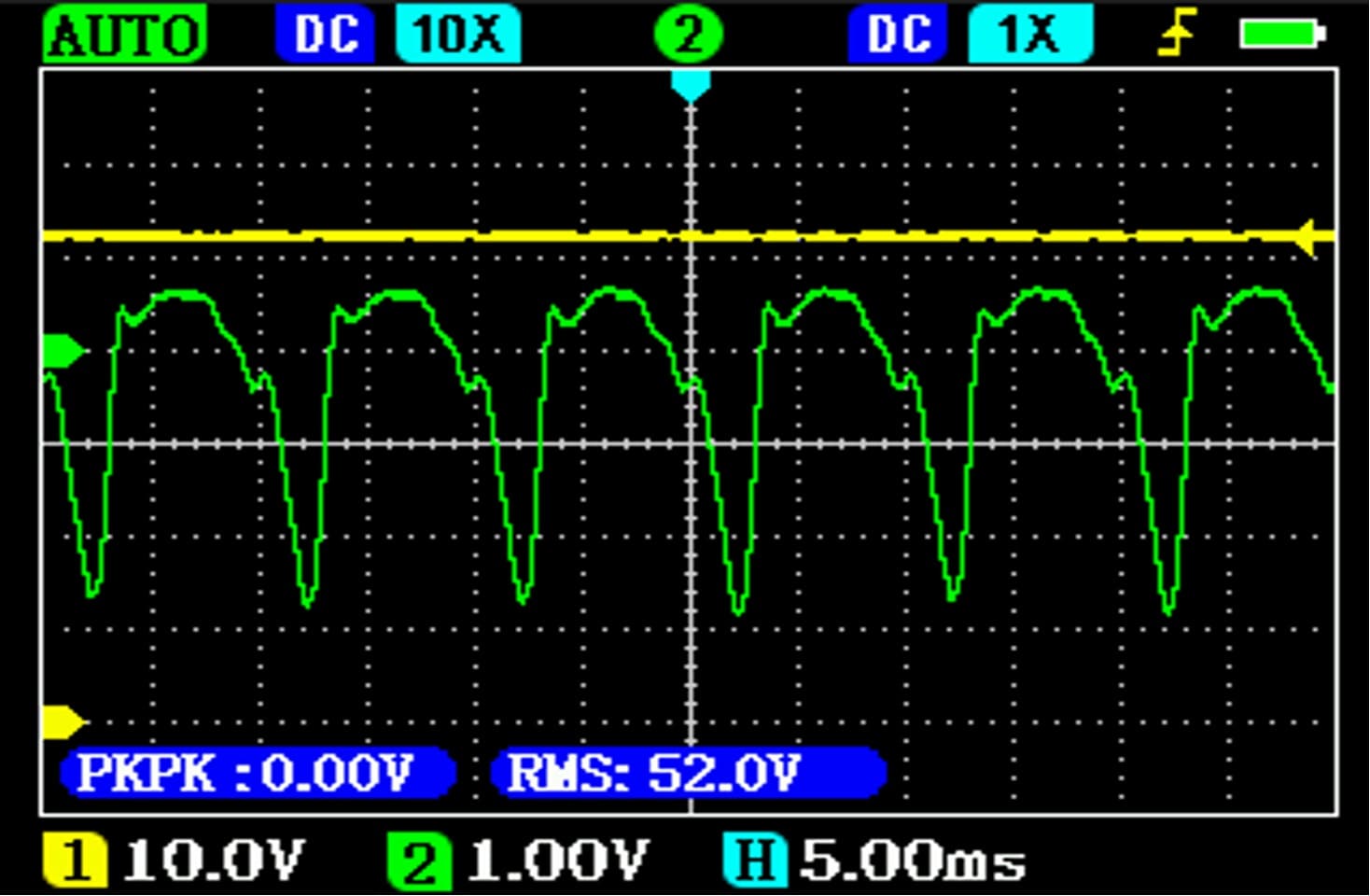
In the image on the left, no power is being drawn from the inverter to power the home and in the image on the right, the power is being drawn in pulses to create a sine wave.
The DC generator has multiple windings and electronic control, which makes the output current much smoother. This is how the charging current (in green) of a LiFePo4 battery (an extreme case) at 40A and 70A current (rms value) looks like:
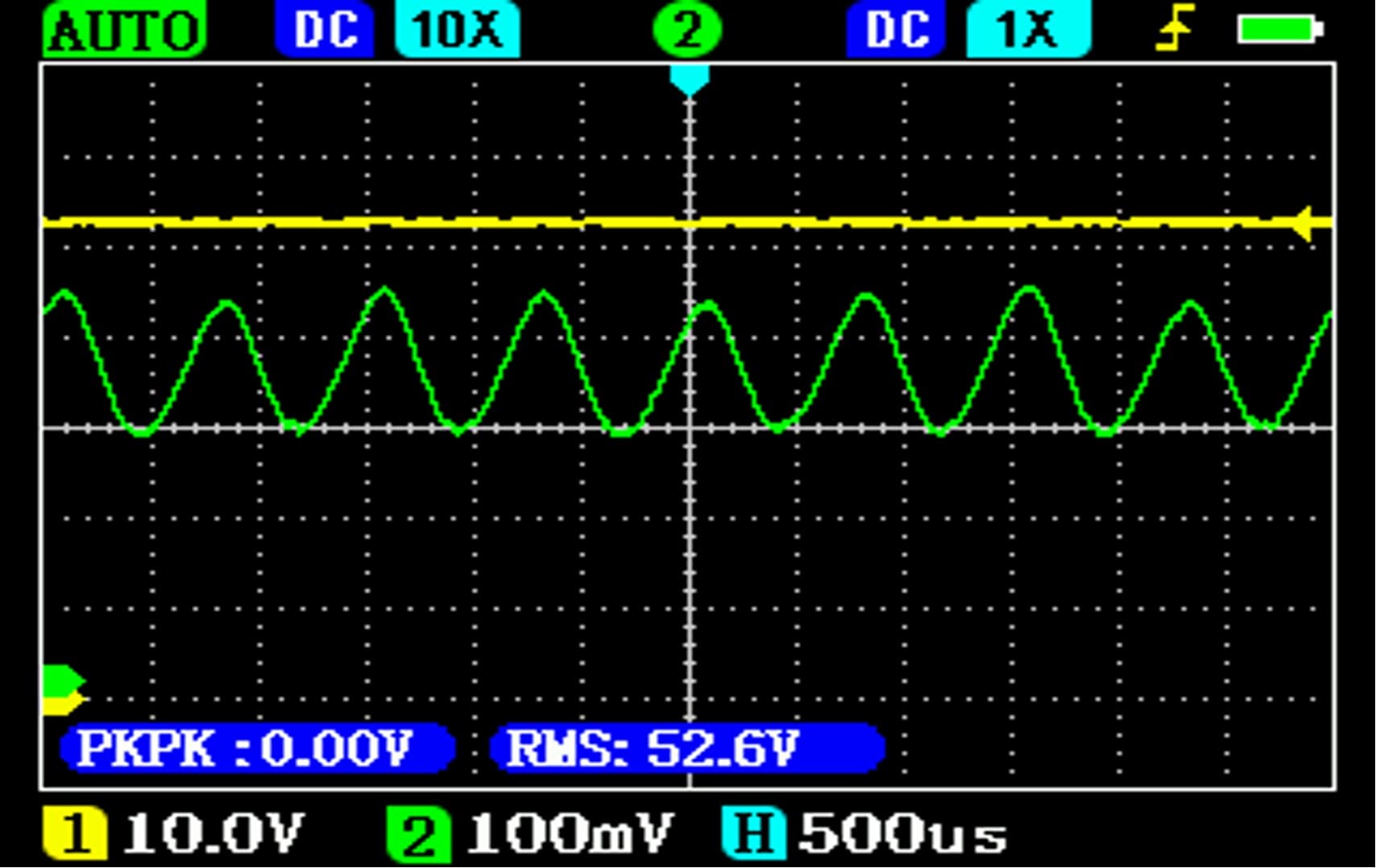
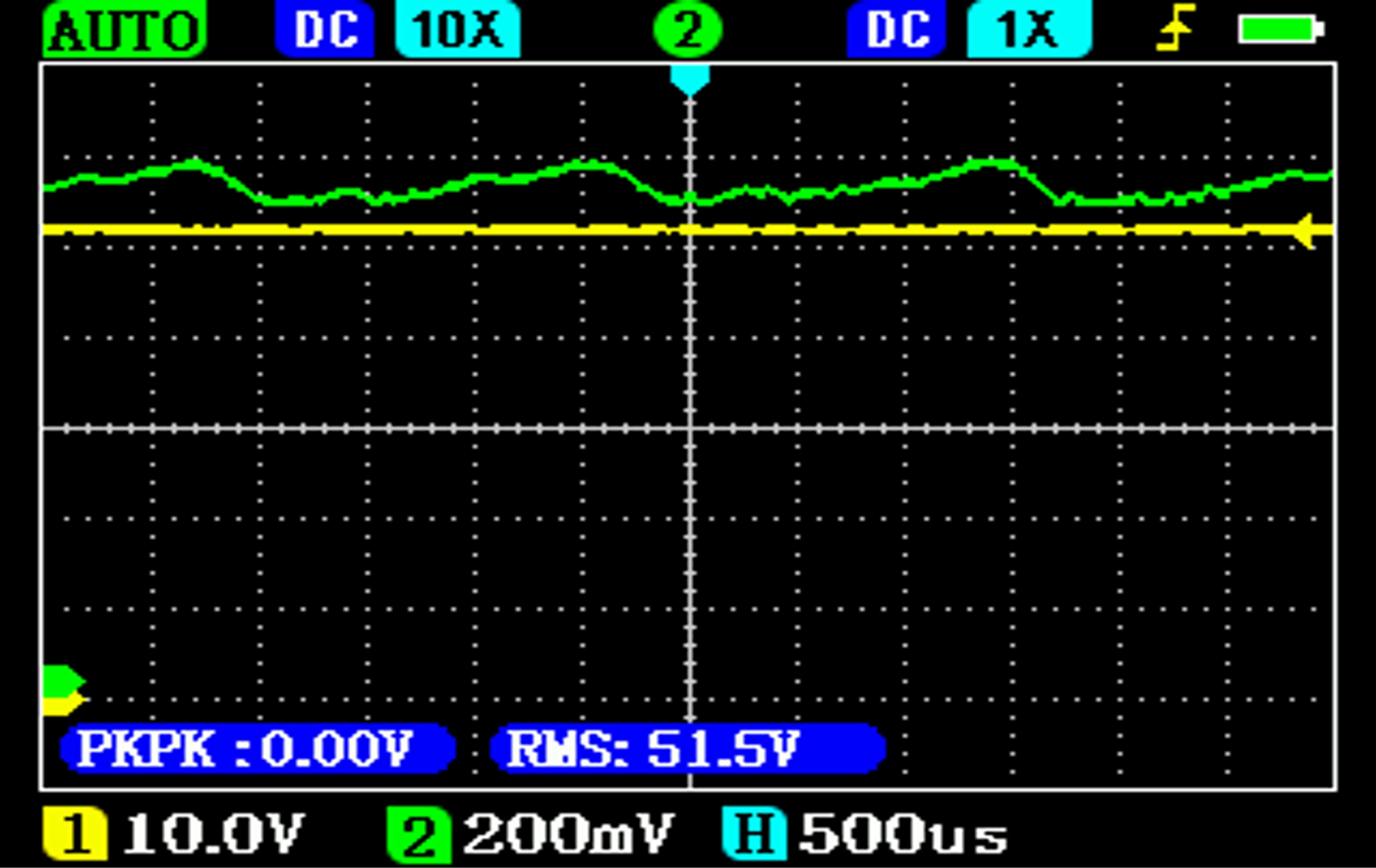
The DC generator output voltage ripple is very low, which can still cause charging current ripple in a LiFePo4 battery. As the charging current increases, the difference between the battery's own voltage and the generator's voltage increases, which can lead to a reduction in the charging current ripple.
A DC generator to charge the batteries is a good solution from all points of view and in some cases there is no better, if any, alternative.
For example, with on-grid inverters with backup power function and with a DC battery storage, there is no way to use an AC generator instead of the public power grid, since such a generator can be damaged by power feedback. The direct current battery storage can only be recharged from a direct current source.
Könner & Söhnen is always working on being able to offer our customers good solutions. A reliable power supply is extremely important and the DC generators from Könner & Söhnen should play an important role in this.
The KS 48V-DC direct current generator has been specially developed for 48V battery storage whose working voltage range overlaps with the 48-54V range.
Here are the parameters of the most common batteries in comparison:
| state of charge SOC, % | voltage LiFePo4 (16x3.2 V) | voltage LiFePo4 (15x3.2 V) | voltage LiIon (14x3.7V) | voltage LiIon (13x3.7V) | voltage AGM (4x12V) | voltage Blei-Säure (4x12V) |
| 100 | 54.4 | 51.0 | 58.0 | 53.9 | 52.0 | 50.4 |
| 90 | 53.2 | 49.9 | 56.7 | 53.1 | 51.0 | 50.0 |
| 80 | 53.0 | 49.7 | 55.4 | 51.9 | 50.0 | 49.7 |
| 70 | 52.8 | 49.5 | 54.1 | 50.7 | 49.2 | 49.3 |
| 60 | 52.6 | 49.3 | 52.8 | 49.5 | 48.6 | 48.8 |
| 50 | 52.5 | 49.2 | 51.5 | 48.3 | 48.2 | 48.2 |
| 40 | 52.3 | 49.1 | 50.2 | 47.1 | 47.8 | 47.6 |
| 30 | 52.0 | 48.8 | 48.9 | 45.8 | 47.2 | 47.0 |
| 20 | 51.6 | 48.4 | 47.6 | 44.6 | 46.6 | 46.3 |
| 10 | 48.0 | 45.0 | 46.3 | 43.4 | 46.0 | 45.2 |
It is imperative to pay attention to such parameters as maximum charging voltage, recommended current and usable capacity:
| charge parameters, max | LiFePo4 16 cells (16x3.2 V) | LiFePo4 15 cells (15x3.2 V) | LiIon 14 cells (14x3.7V) | LiIon 13 cells (13x3.7V) | AGM 4 batterys (4x12V) | Blei-Säure 4 batterys (4x12V) |
| voltage, V | 57.6 | 54.0 | 58.0 | 53.9 | 58.0 | 57.2 |
| current, C | 1.0 | 1.0 | 0.5 | 0.5 | 0.2 | 0.2 |
| usable capacity, % | 90-100 | 90-100 | 90-100 | 90-100 | 50-80 | 50 |
The maximum output voltage of the KS 48V-DC is selected in such a way that no overcharging occurs, even with AGM and lead-acid batteries. This is in the area of trickle charging and cannot damage the batteries even if the generator runs for several hours.
If the voltage on the 48V bus bar is to rise to 57V (e.g. due to other DC power sources), the generator stops immediately, regardless of the mode.
The lithium batteries are equipped with BMS controllers, which also prevent overcharging.
The voltage range of 48-54V fits most 48V bus bars. The voltage drop in the cables from the generator to the 48V bus bars must also be taken into account, which can be 0.5-1.0V depending on the current strength.
The KS 48V-DC works like a charger or a charging module with an IU characteristic:
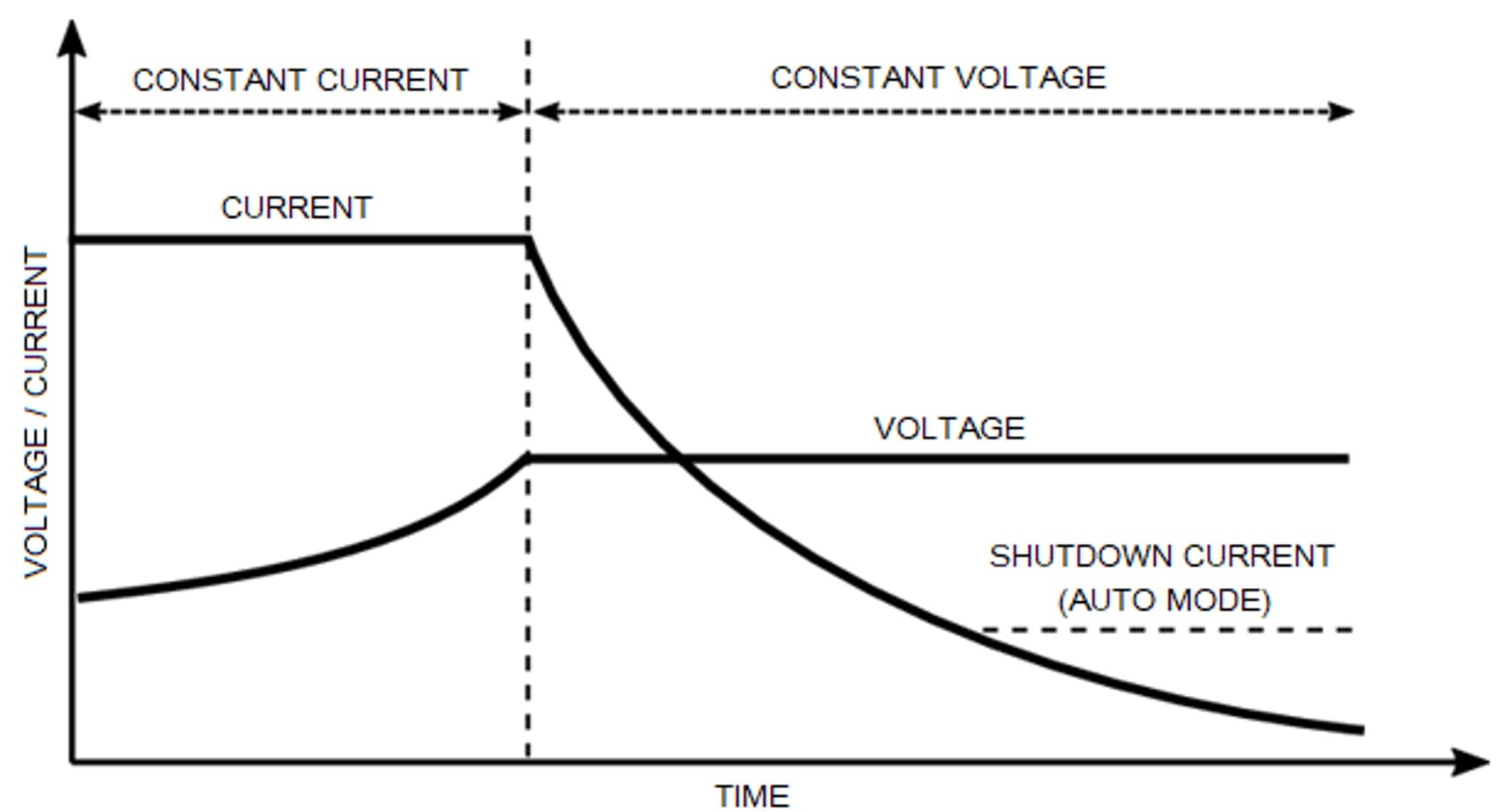
OPERATION IN AUTO MODE
The generator in AUTO mode monitors the voltage of the battery to be supplied and starts automatically when the lower voltage value of 47.5-48V is reached. Reaction time about 5 seconds.
The generator charges the battery with a voltage of up to 53.5-54V and a current of up to 70-75A and turns off as soon as the voltage reaches 53.5-54V and the charging current falls below 20A. Reaction time about 30 seconds.
The generator can be started by pressing the START button at any time regardless of the battery voltage, but will be stopped within 30 seconds after the current draw comes below 20A.
The green signal lamp (operating display) lights up continuously when the current draw exceeds 20A and flashes when the current draw falls below 20A.
If the power consumption in the respective case is technically never to fall below 20A (48V busbar), the EXTERNAL CONTROL mode should be used so that the generator does not run continuously.
Batteries with 15 x LiFePo4 cells such as Pylontech US2000, US3000 and US5000 have a lower working voltage and charging such a battery in AUTO mode would have to be done with constant current (maximum current 70A, red LED permanently lit) until the battery is fully charged and the BMS controller closes.
This is not desirable in most cases because the optimal charge level of a lithium battery is 50-80%. In addition, there must always be some “room for the sun”. The generator only needs to deliver a certain amount of energy to the battery so that the power supply remains uninterrupted even when there is not enough sun, wind, etc.
The KS 48V-DC DC generator has EXTERNAL CONTROL mode, which enables a variety of emergency power solutions and allows the generator to be adapted to different 48V battery storage and operating conditions.
OPERATION IN EXTERNAL CONTROL MODE
The generator in EXTERNAL CONTROL mode will be started by closing the CONTROL TERMINAL contacts and stopped by opening them. This mode allows the generator to be optimally adapted to different battery storage systems by external control of devices with potential-free “dry” contacts, which significantly expands the generator's range of application. With the jumper between the CONTROL TERMINAL contacts, the generator starts immediately as soon as the rotary switch is turned to the ON position and stops when it is in the OFF position. Such use is recommended in order to be able to start and stop the generator manually regardless of the battery voltage.
Many devices are equipped with potential-free “dry” contacts (inverters, UPSs, batteries with BMS controllers, battery monitors, time relays, etc.) and this allows to implement all possible algorithms of generator use.
OVERVOLTAGE and OVERLOAD PROTECTION
If the voltage on the 48V busbar or the battery to be supplied should rise to 57V and higher for any reason, the generator switches off immediately.
The output voltage of the generator is reduced when the maximum current is exceeded and can be lower than 48V, but if it gets too low, it is recognized as a short circuit and the generator is switched off immediately.
It is normal for the red LED to light up while charging at maximum current. This only means that the maximum output current of the generator has been reached.
Recommended connection diagram for the KS 48V-DC for automatic charging of the battery storage based on 48V batteries with 15 LiFePo4 cells in series:
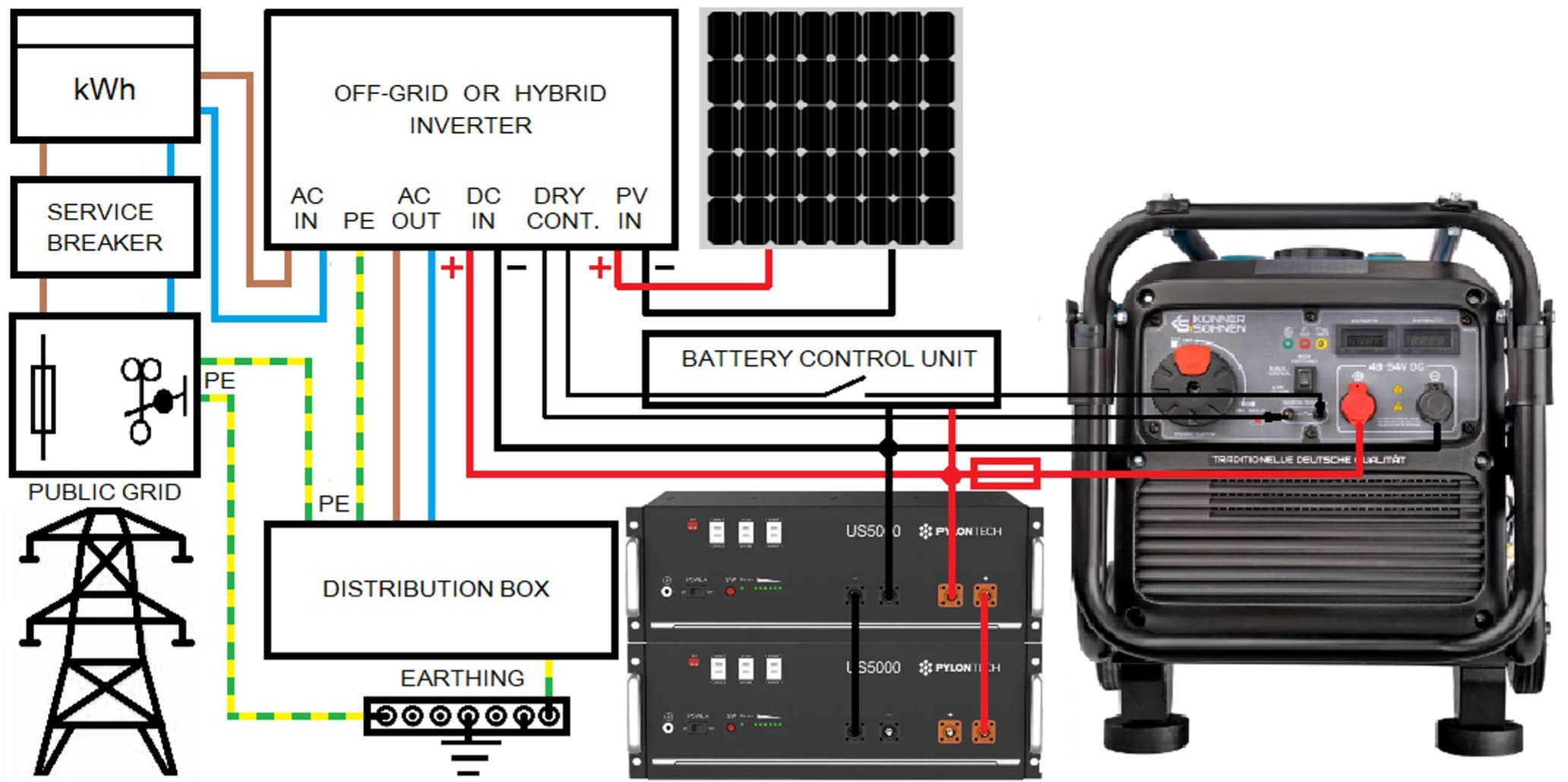
The generator is started by closing the programmable dry contacts of the inverter and stopped by opening them.
The battery control unit serves as additional protection against overcharging in the event that problems occur with the inverter or the battery's BMS controller fails. We recommend setting the upper threshold value (contacts are opened) on the battery monitor to 51-52V.
Technical data for charging the Pylontech US2000/US3000/US5000 batteries:
Charging voltage, DC: 52.5-53.5V (corresponds to the output voltage of the KS 48V-DC minus the voltage drop in the cables)
Recommended charging current: up to 25A (US2000), 37A (US3000), 80A (US5000)
The minimum capacity of the battery storage suitable for the KS 48V-DC is either 1 x US5000, or 2 x US3000, or 3 x US2000.
Voltage with 10% remaining charge: approx. 45V
Voltage with 20% remaining charge: approx. 48.4V
Since at least 10% of the charge should remain in the battery storage, we recommend setting the lower threshold value for starting the generator at approx. 15% or 47V.
If the inverter is not to have programmable dry contacts, the following connection diagram should be used:
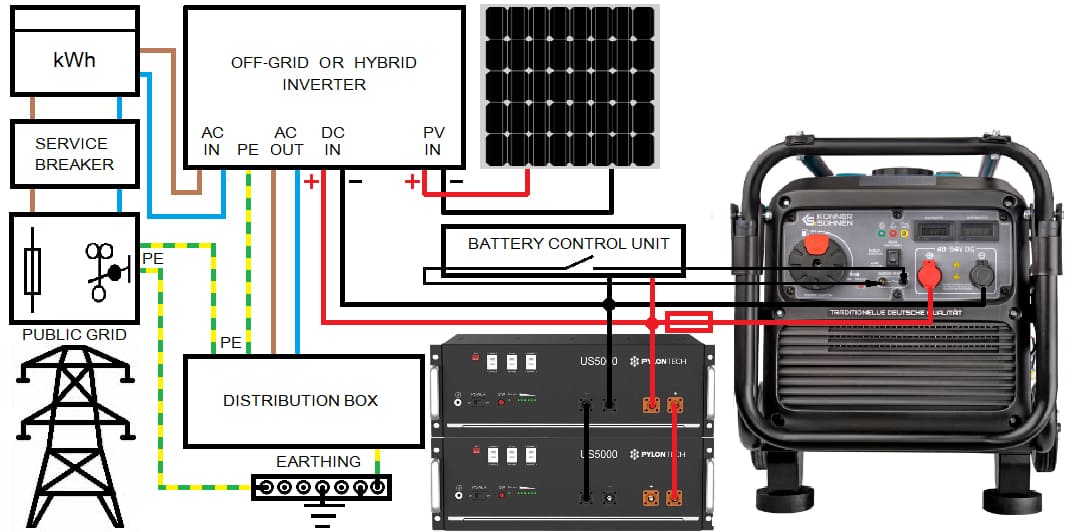
Example of a 48V battery voltage control unit:
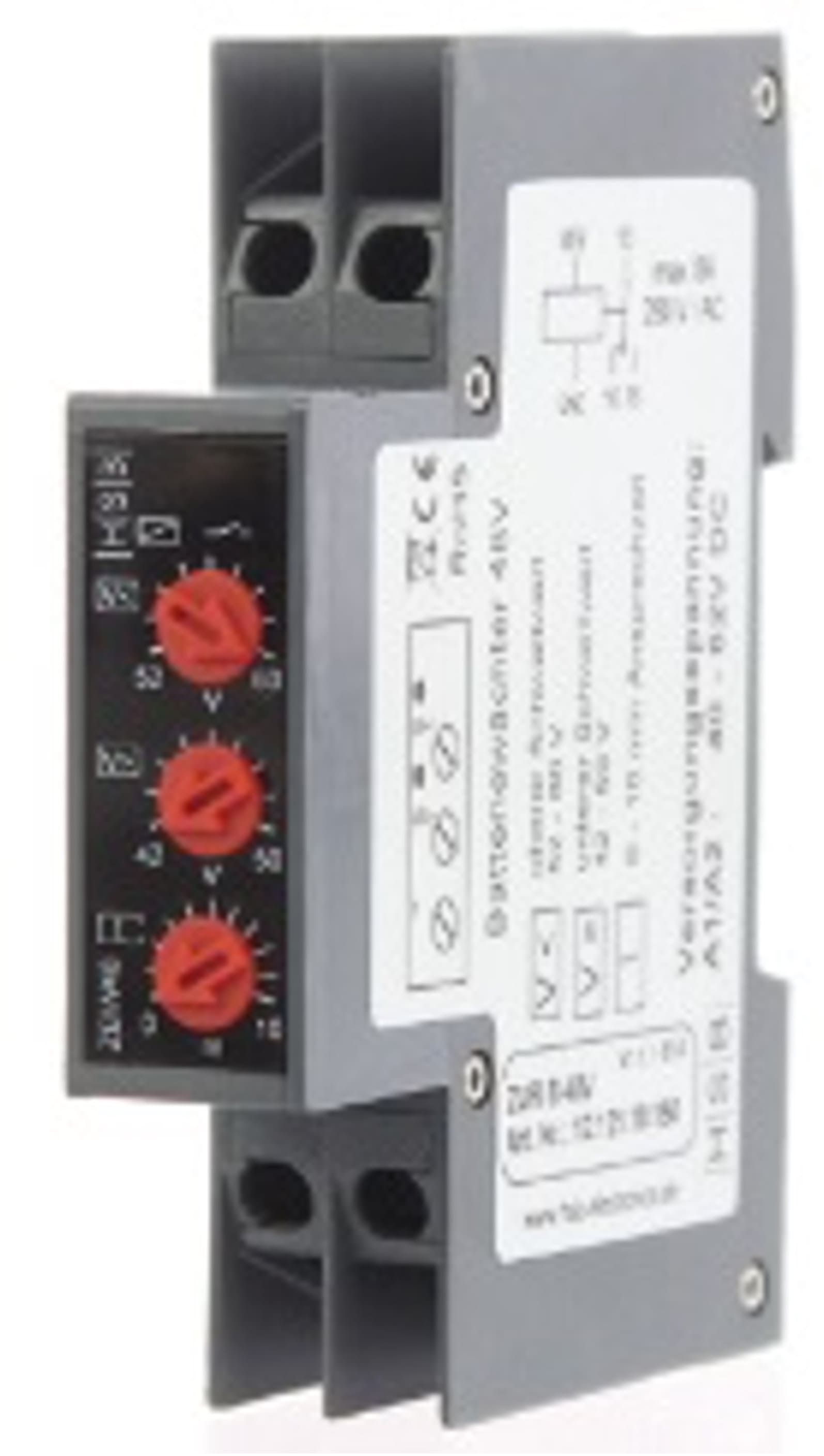
With the battery voltage control unit, the lower and upper threshold values of the battery voltage and the reaction time can be set. Setting the reaction time would be important in order to avoid unnecessary starting of the generator in the event of a short-term high load on the battery storage, which can lead to a short-term voltage drop that cannot be attributed to a low state of charge in the battery storage.
If the battery monitor does not work properly and does not switch off the generator in time by opening the contacts when the upper threshold is reached, the generator will continue to run until the BMS controller stops the charging process by closing the corresponding transistors. At that moment, there may be a brief increase in the output voltage due to a rapid reduction in the load (if hardly any power is to be drawn from the inverter), which can trigger the overvoltage protection (at 57V) on the generator.
OVERVOLTAGE and OVERLOAD PROTECTION
If the voltage on the 48V busbar or the battery to be supplied should rise to 57V and higher for any reason, the generator switches off immediately.
The output voltage of the generator is reduced when the maximum current is exceeded and can be lower than 48V, but if it gets too low, it is recognized as a short circuit and the generator is switched off immediately.
It is normal for the red LED to light up while charging at maximum current. This only means that the maximum output current of the generator has been reached.
PROTECTION IN THE EVENT OF LOW FUEL OR ENGINE OIL
If the fuel is used up, the engine stops.
If the oil level is too low (yellow LED lights up), the engine stops immediately.
If the starting conditions are met (the battery voltage is below 47.5-48V in AUTO mode or EXTERNAL CONTROL contacts are short-circuited in EXTERNAL CONTROL mode), the engine tries to start 5 times and if it doesn't work, an error message appears (red LED flashes).
EASY SERVICE
The generator does not have its own battery and is started by the battery to be supplied. The battery to be supplied usually has a capacity of several kWh and even with a low charge there is still more than enough energy to start the generator, even after several attempts to start it. This eliminates the need for regular maintenance of the generator's battery, as is customary with AC generators, for example, and increases the reliability of the emergency power supply when the generator is rarely used.
With the generator, however, care must be taken to ensure that the shelf life of the fuel is not exceeded. We recommend only using long-lasting petrol with an octane number of 90-95 as fuel, paying attention to possible deposits in the carburetor and draining them off in good time depending on the shelf life of the petrol.
It is also important to pay attention to the shelf life of the engine oil. This must be changed either every 12-18 months according to the manufacturer's specifications or every 50 operating hours.
The air filter should be replaced depending on how dirty it is.
DISCLAIMER:
These instructions can only be taken as a recommendation, are illustrative and must be adapted to the exact local circumstances and conditions during installation. The installation itself should be carried out in compliance with all standards and regulations. We take no responsibility for the wrong installations and their consequences.



